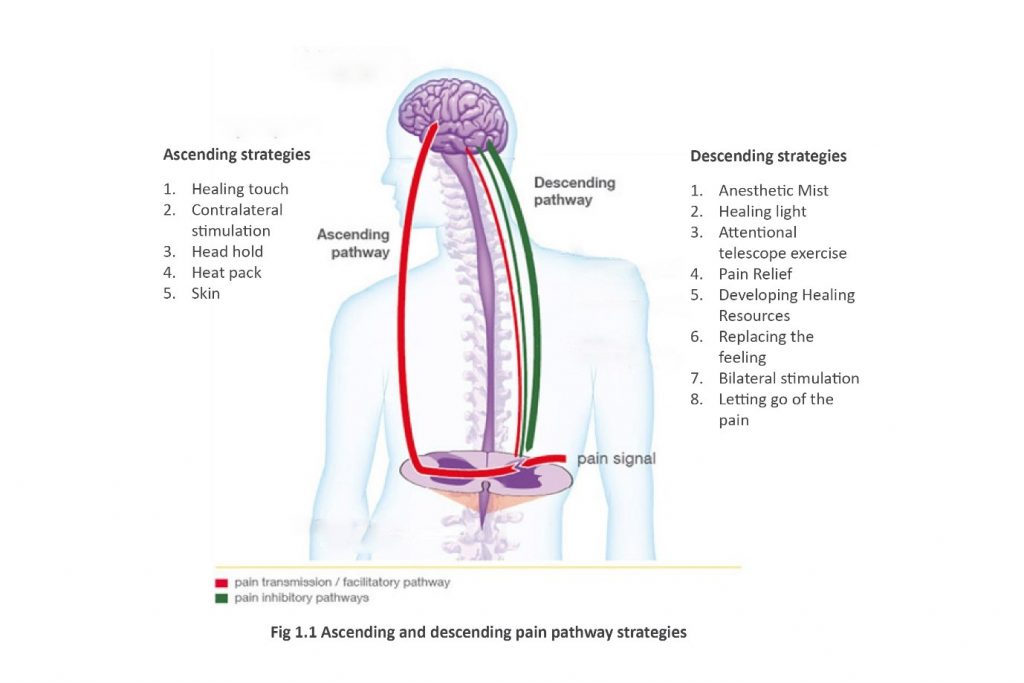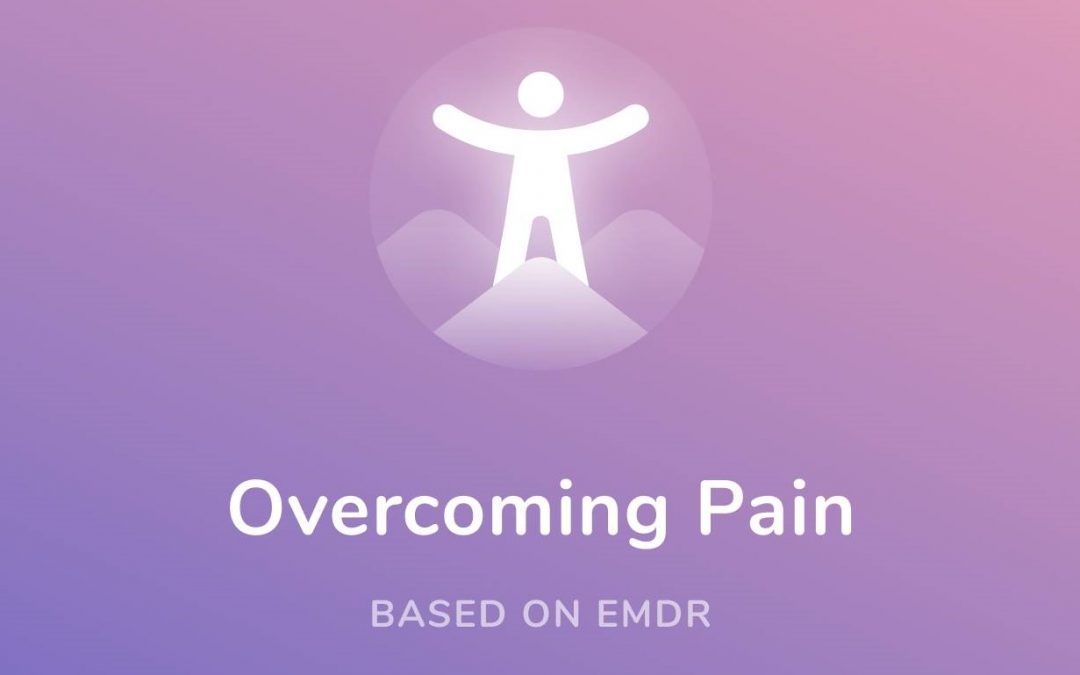Because chronic pain is so unresponsive to standard medical treatments, chronic pain sufferers are always looking for alternatives. Diet, herbs, cannabis and even aromatheapy are just some of the possibilities. But did you know that your nervous system has two built-in pain-control mechanisms – bottom-up (ascending) and top-down (descending) – and that each one stimulates the release of different pain relieving chemicals? So when you touch of apply heat or pressure to a painful area of your body, it stimulates decreased substance P and glutamate, neurotransmitters that are involved in the transmission and amplification of pain signals from the body to the brain. Touch also stimulates the releasee of Gaba, a neurotransmitter that inhibits pain. So that’s how external physical stimuli, such as touch, heat and cold, topical creams and even acupuncture, can relieve pain.
But you also have another pain control pathway running from your brain to your body. The descending pain pathway involves triggering the release of endogenous opioids such as Endorphins and Enkephalins via a chain reaction involving serotonin and norepeniphrine, through strategies such as guided imagery, attentional re-focusing, memory activation and EMDR. These strategies rely on stimulation of three brain regions; the sensory cortex, the limbic system and the PAG (periaductal grey). The effects of ascending and descending strategies converge in an area of the brain-stem that contains a lot of pain neurons known as the lamina 2.
Although many of these strategies are not new, thanks to recent advances in brain science, the way they work is increasingly understood This is facilitating the creation of more effective ways of accessing the brains innate pain regulating powers. For example, EMDR relies on bilateral sensory stimulation to stimulate the limbic system to activate the descending pain pathway. Brain scans of EMDR recipients have shown changes in brain activity associated with stress.
Mobile technology such as smart-phones and wearables such as the apple watch are facilitating the creation of new pain control strategies. One such resource is my Overcoming pain app, which was released this week, national pain week in Australia. Overcomingpain uses recent discoveries from brain science to deliver strategies that target the brain processes that maintain chronic pain. More than just words, the meditations and exercises in this app incorporate a unique combination of bilateral stimulation focused attention and sensory-emotional stimulus. Bilateral stimulation is a treatment element of EMDR and uses sensory stimulation to change physical emotional and cognitive processes associated with chronic pain.
The app comprises three playlists for controlling pain and associated stress that can maintain pain; Mental Healing strategies, Sensory Healing strategies and Stress Management. The first two playlists use ascending and descending pain pathway strategies. Mental Healing strategies (playlist 1) relies on brain-based descending pain pathways with strategies such as guided imagery, bilateral stimulation and sensory processing to alleviate physical discomfort. Descending pain pathways stimulate the body’s natural opioid system (endorphins and enkephalins) to alleviate pain. Descending pain pathway strategies draw on mental abilities such as focused attention and memory.

Stress management (playlist 3) aims to help you reduce the stressful feelings that can maintain and exacerbate chronic pain. We know that chronic pain sufferers’ nervous systems are in a state of elevated arousal which maintains pain through increased stress hormones and decreased sleep and immune functioning. Stress management strategies such as meditation lowers these arousal levels and augments the bodies ability to resist pain.


